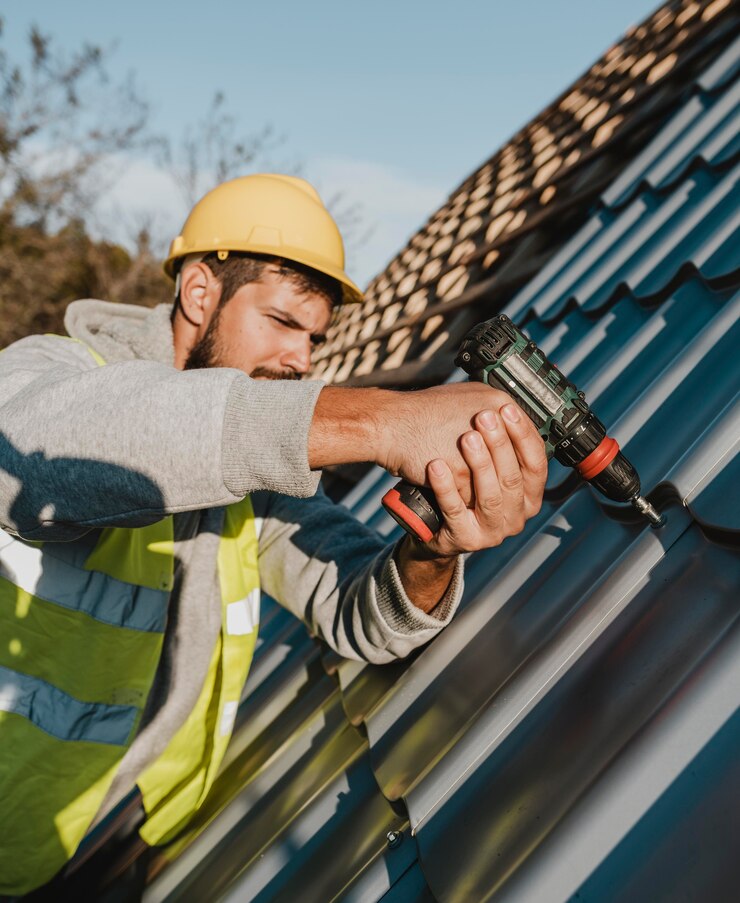.jpg)
The structure of a roof is an important part of a building. If we talk about the commercial building, it is equally important to ensure safety. The roof of the building supports building equipment and ensures proper ventilation.
Commercial roofing includes installation, repairs, maintenance, and inspections of offices, warehouses, and retail stores. Commercial roofing safety in Surrey, BC, must be ensured to withstand weather challenges. Proper roofing structure plays a crucial role in preserving the value and safety of the property.
Tips To Extend The Life of a Commercial Roof
Commercial roofing is a long-term expense. A well-constructed roof will last for a long time. Additionally, proper roofing can prevent damage to other parts of the building. Not only do we need proper installation, but we also need to take care of the roof maintenance. Maintenance of the roof is important. It can be easy and inexpensive. From installation to maintenance, follow the following tips to extend the life of commercial roofing:
1. Choose The Right Roofing Material
To extend the life of the roof, choose the right material. Choosing quality and durable materials can significantly enhance the longevity of the roof. Consider factors like location, weather, slope, building structure, and intended. By the way, the right material goes beyond looks, but professionals can provide you with both.
Experienced roofers can guide you to the right material as per your requirements. For commercial roofing, you have a range of options, including EPDM, metal, built-up roofing membrane, shingle, and PVC.
2. Follow The Maintenance Plan
Following the maintenance plan is an integral part of commercial roof maintenance. The single most effective way to maximize roof performance is to adopt a proactive approach towards preventive maintenance, that minimizes the total and annualized cost of ownership of the roofing system through regularly scheduled inspections and periodic repairs of common problematic components.
3. Schedule Regular Inspections
To keep the roof in the best condition, semi-annual roof inspections and maintenance are required. During the inspection, a contractor can catch issues like clogged drains, or physical damage that can cause big problems later. For buildings in regions with snow and ice, schedule roof inspections in spring and fall to identify and address any potential winter-related damage before the next season arrives.
4. Keep The Roof Clean
Regularly clean your roof to clear off leaves, dirt, trash, and other debris that can build up and clog your gutters or ventilation system, leading to water drainage issues and damage. Snow removal may be necessary in the winter, depending on building construction.
5. Prioritize Timely Repairs
When repairs are necessary because of physical damage, storm damage, or regular rooftop maintenance activities, they should be addressed promptly, if ignored, they will become worse and put your roof at risk of needing a total replacement.
6. Limit Foot Traffic
Excessive traffic will eventually lead to damage. Don't let tenants or other people walk on the roof; only trusted professionals servicing equipment or the roof itself should have access.
Safety Through Active Maintenance
A well-maintained roof protects your investment and ensures the safety of anyone accessing it for maintenance or repairs. Here are some key actions:
Fall Protection
Commercial rooftops are workplaces; if the roof requires routine maintenance, consider installing permanent fall protection systems like guardrails following recommended safety standards.
Safe Access Points
Ensure safe access points to the roof, like ladders for stairwells. Regular maintenance and inspections of access points are crucial.
Maintenance Plan
Create a comprehensive maintenance plan with your chosen roofing contractor. This plan should include inspection schedules, cleaning procedures, and protocols for minor repairs.
Emergency Preparedness
Develop a plan for unforeseen circumstances, like leaks or storm damage. Having a clear plan helps minimize downtime and ensures prompt response to emergencies.
Signage And Communication
Post clear and visible signage around the building perimeter to identify restricted areas and potential roof hazards like skylights. Communicate safety protocols to all employees, including temporary staff and contractors.
Employee Training
Consider providing basic safety training to employees who might have reason to be near the roof, even if they are not accessing it directly. This includes training on identifying potential hazards like loose debris or water pooling, and proper reporting procedures.
Professional Roofing
Qualified roofing contractors are not about repairs. They are valuable partners in maintaining a safe and secure commercial roof. Here is how they can contribute:

Thorough Inspections
They conduct thorough inspections, identifying potential problems early on, such as loose fasteners and clogged drains, before they escalate into safety hazards.
Safe Repair Solutions
They recommend the most suitable and safe repair solutions, prioritizing worker safety during any roof work. This may involve using fall protection equipment or implementing specific work procedures to minimize risks.
Safety Regulation Compliance
They ensure adherence to safety regulations during roof work. This includes using appropriate fall protection systems, following safe work practices, and having workers properly trained on safety protocols.
By prioritizing commercial roof maintenance and integrating safety measures, you protect your property and valuable assets and ensure the well-being of workers accessing the roof for maintenance or repairs. A safe and well-maintained roof contributes to a positive work environment and minimizes potential liabilities for your business.
A commercial roof is a significant investment that requires regular maintenance and safety considerations. By following these tips, you can extend the lifespan of your roof, ensure worker safety, and minimize potential liabilities for your business. Remember, a proactive approach to roof maintenance and safety is an investment that pays off in the long run.

